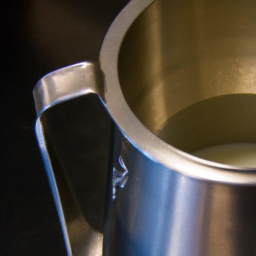Caffeine In Vietnamese Coffee
Ever wondered how a cup of Vietnamese coffee can give you such a boost of energy? Well, let’s talk about caffeine in Vietnamese coffee and how it packs a punch. You’ll be surprised to learn that Vietnamese coffee can have up to twice the caffeine content of a regular cup of coffee!
You know that feeling when you take that first sip of Vietnamese coffee, and you can practically feel yourself coming alive? Well, that’s all thanks to the high caffeine content. Vietnam is known for its robusta beans, which have naturally higher levels of caffeine compared to the arabica beans commonly used in other parts of the world. So, when you indulge in a cup of Vietnamese coffee, you’re getting a double dose of that energizing caffeine.
In our article, we’ll dive deeper into the fascinating world of Vietnamese coffee and its caffeine content. We’ll explore why Vietnamese coffee is so strong, the difference between robusta and arabica beans, and how you can make your own delicious cup of Vietnamese coffee at home. So, get ready to embark on a coffee journey like no other, where you’ll discover the secrets behind the content caffeine in Vietnamese coffee.
What is Vietnamese Coffee?
Vietnamese coffee is a unique and richly flavored beverage that has gained popularity around the world. It is known for its strong taste and thick texture, resulting from the brewing method and the types of beans used. However, one of the key factors that sets Vietnamese coffee apart from others is its high caffeine content.
The origins of Vietnamese coffee
Vietnam has a long history of coffee production, dating back to the French colonization in the 19th century. The coffee industry in Vietnam began to flourish, and the country soon became one of the largest coffee producers in the world. Today, Vietnam is renowned for its robusta coffee beans, which are commonly used in Vietnamese coffee.
Unique characteristics of Vietnamese coffee
Vietnamese coffee is known for its robust and intense flavor, which can be attributed to robusta beans. These beans have a higher caffeine content and are generally more bitter than arabica beans, commonly used in other countries. Additionally, Vietnamese coffee is often brewed using a phin filter, a small metal drip brewer that allows for slower extraction, resulting in a stronger and more concentrated coffee.
Traditional brewing methods in Vietnam
In Vietnam, coffee is typically brewed using a phin filter. The phin filter consists of a small filter chamber that sits on top of a cup or mug. Ground coffee is placed in the chamber, and hot water is poured over it. The water then slowly drips through the filter into the cup, allowing for the flavors and caffeine to be extracted gradually. This method produces a strong and highly caffeinated cup of Vietnamese coffee.
Caffeine Content in Vietnamese Coffee
Factors affecting caffeine levels in coffee
The caffeine content in coffee can vary depending on several factors. The type of coffee bean used is one of the primary factors influencing caffeine levels. Robusta beans, commonly used in Vietnamese coffee, have a higher caffeine content than arabica beans. The roasting process can also impact caffeine levels, with darker roasts generally having less caffeine than lighter roasts.
Typical caffeine content in Vietnamese coffee
Vietnamese coffee is known for its high caffeine content. A cup of Vietnamese coffee can contain approximately 100-120 milligrams of caffeine. This is significantly higher than the caffeine content in a typical cup of arabica coffee, which ranges from 70-100 milligrams. The strong and bold flavor of Vietnamese coffee is partly due to its high caffeine content.
Comparison to other types of coffee
Compared to other types of coffee, Vietnamese coffee has a higher caffeine content. For example, a cup of drip-brewed coffee typically contains around 95 milligrams of caffeine, while an espresso shot has approximately 63 milligrams of caffeine. Vietnamese coffee’s potent caffeine kick makes it a popular choice for those seeking a strong and energizing cup of coffee.

Health Effects of Caffeine in Vietnamese Coffee
Stimulant properties of caffeine
Caffeine is a natural stimulant that affects the central nervous system. It can help increase alertness, improve focus, and combat fatigue. Vietnamese coffee’s high caffeine content makes it an effective pick-me-up beverage, providing a jolt of energy to start your day or keep you going during long work hours.
Positive effects on cognitive function
Research has shown that moderate caffeine consumption can positively affect cognitive function. It can improve memory, enhance reaction time, and increase mental performance. Enjoying a cup of Vietnamese coffee can provide you with a boost of energy and help sharpen your focus and concentration.
Potential negative effects from excessive consumption
While caffeine can offer numerous benefits, excessive consumption can lead to negative effects. It can cause restlessness, anxiety, insomnia, and increased heart rate. It’s essential to be mindful of your caffeine intake and avoid consuming excessive amounts of Vietnamese coffee or any caffeinated beverage, especially later in the day, to avoid sleep disturbances.
Vietnamese Coffee Culture

Role of coffee in Vietnamese culture
Coffee plays a significant role in Vietnamese culture and daily life. It is a beverage that brings people together, whether it’s enjoying a cup of coffee at a street-side cafe or gathering with friends and family in a coffee shop. Coffee has become a symbol of socialization and relaxation in Vietnamese culture.
Coffee shops and social gatherings
Coffee shops are common in Vietnam, with numerous establishments catering to locals and tourists alike. These coffee shops provide a space for people to gather, chat, and relax over a steaming cup of coffee. They are vibrant and bustling places where friendships are made, business deals are discussed, and conversations flow freely.
Coffee as a part of daily life
Vietnamese coffee is not just a beverage but a daily ritual for many Vietnamese people. It is often enjoyed in the morning as a kickstart to the day or in the afternoon as a way to unwind and take a break from work. Vietnamese coffee has become deeply ingrained in the fabric of everyday life, symbolizing both comfort and energy.

Varieties of Vietnamese Coffee
Traditional Robusta beans in Vietnamese coffee
The traditional choice for Vietnamese coffee beans is robusta. Robusta beans are hardy and easier to grow in Vietnam’s climate, resulting in higher yields. They have a distinct flavor profile, known for their bitterness and earthy notes. Robusta beans also have a higher caffeine content, contributing to Vietnamese coffee’s strong and intense flavor.

Emerging trend of Arabica beans
While robusta beans dominate the Vietnamese coffee industry, there is a growing trend of using arabica beans. Arabica beans are typically favored for their milder and more nuanced flavor profiles. Using arabica beans in Vietnamese coffee provides a different taste experience, appreciated by those who prefer a smoother and less bitter cup of coffee.
Blend options and flavor profiles
Vietnamese coffee also offers various blend options, combining different ratios of robusta and arabica beans. These blends allow for a range of flavor profiles, from bold and intense to smoother and more delicate. Each blend offers a unique experience, catering to different taste preferences and coffee connoisseurs.
Popular Vietnamese Coffee Drinks
Ca phe sua da (Vietnamese iced coffee with condensed milk)
One of the most popular Vietnamese coffee drinks is ca phe sua da, a refreshing iced coffee with sweetened condensed milk. It is made by brewing strong Vietnamese coffee using a phin filter, then serving it over ice with a generous amount of condensed milk. The result is a creamy and flavorful iced coffee that is both indulgent and satisfying.
Ca phe trung (Vietnamese egg coffee)
Ca phe trung, or Vietnamese egg coffee, is a unique and decadent coffee drink. It is made by mixing egg yolks, condensed milk, sugar, and Vietnamese coffee to create a frothy and creamy concoction. Combining the rich and velvety egg mixture with the bold coffee creates a delightful and indulgent drink.
Ca phe den da (Vietnamese black iced coffee)
For those who prefer strong and black coffee, ca phe den da is the perfect choice. It is a simple yet powerful drink, made by brewing Vietnamese coffee using a phin filter and serving it over ice. This black iced coffee is bold, intense, and delivers a potent caffeine kick.
Caffeine Alternatives in Vietnamese Coffee
Decaffeinated Vietnamese coffee options
If you enjoy the flavors of Vietnamese coffee but prefer to limit your caffeine intake, there are decaffeinated options available. Decaffeinated Vietnamese coffee undergoes a process to remove a significant portion of the caffeine while preserving its flavor characteristics. It allows you to savor the taste of Vietnamese coffee without the stimulating effects of caffeine.
Caffeine-free herbal coffee substitutes
For those seeking caffeine-free alternatives, there are herbal coffee substitutes that mimic the taste of Vietnamese coffee. These substitutes are often made from a combination of roasted herbs, grains, and nuts, creating a similar aroma and flavor profile. While they may not provide the same caffeine boost, they offer a satisfying coffee-like experience.
Other Vietnamese beverages without caffeine
Vietnamese cuisine is rich in various non-caffeinated beverages that are also worth exploring. These options include Vietnamese iced tea, fruit smoothies, sugarcane juice, and coconut water. These refreshing and flavorful drinks provide hydration and a break from caffeine while still offering a taste of Vietnamese culture.
Culinary Uses of Vietnamese Coffee
Coffee in traditional Vietnamese desserts
Vietnamese coffee is enjoyed as a beverage and incorporated into traditional desserts. One popular example is ca phe trung muoi, a salted egg coffee dessert. It consists of a salted egg yolk mixed with condensed milk and Vietnamese coffee, resulting in a rich and creamy dessert with a unique flavor profile.
Infusions and flavorings in savory dishes
Vietnamese coffee is also used as a flavor infusion in savory dishes. It can be used as a marinade for meat, adding depth and complexity to the flavors. Additionally, Vietnamese coffee is sometimes used as an ingredient in sauce or dressing recipes, imparting a hint of bitterness and a robust coffee aroma.
Vietnamese coffee-inspired recipes
The versatility of Vietnamese coffee extends beyond beverages and desserts. It inspires various recipes, including coffee-flavored cakes, cookies, and even ice cream. The distinct taste of Vietnamese coffee adds a bold and unique flavor to these dishes, making them a delightful treat for coffee lovers.
Vietnamese Coffee Industry

Local coffee production and export
Vietnam is one of the largest coffee producers in the world, with coffee being one of the country’s most important agricultural exports. The favorable climate and fertile soil make it an ideal location for coffee cultivation, leading to high-quality beans that are sought after globally. The Vietnamese coffee industry plays a significant role in the country’s economy and international trade.
Economic impact on the Vietnamese economy
The Vietnamese coffee industry has a significant economic impact on the country. It provides employment opportunities for thousands of farmers and workers involved in coffee cultivation, processing, and export. The revenue generated from coffee exports helps stimulate economic growth, improve infrastructure, and contribute to the overall development of Vietnam.
Sustainable and ethical practices
The Vietnamese coffee industry has shown a growing commitment to sustainable and ethical practices in recent years. Efforts are being made to promote environmentally friendly cultivation methods, reduce water consumption, and improve the welfare of coffee farmers. These initiatives aim to ensure the Vietnamese coffee industry’s long-term sustainability and protect the country’s natural resources.

Conclusion: Caffeine in Vietnamese coffee
Caffeine in Vietnamese coffee is significant in its flavor, cultural significance, and impact on the Vietnamese economy. With its unique brewing methods and high caffeine content, Vietnamese coffee offers a distinct taste and a potent energy boost. Whether you prefer a strong cup of ca phe sua da or a velvety ca phe trung, Vietnamese coffee provides a wide range of options to satisfy any coffee lover’s palate. So explore the diverse variations, savor the flavors, and enjoy the caffeine-fueled delight that Vietnamese coffee brings.






